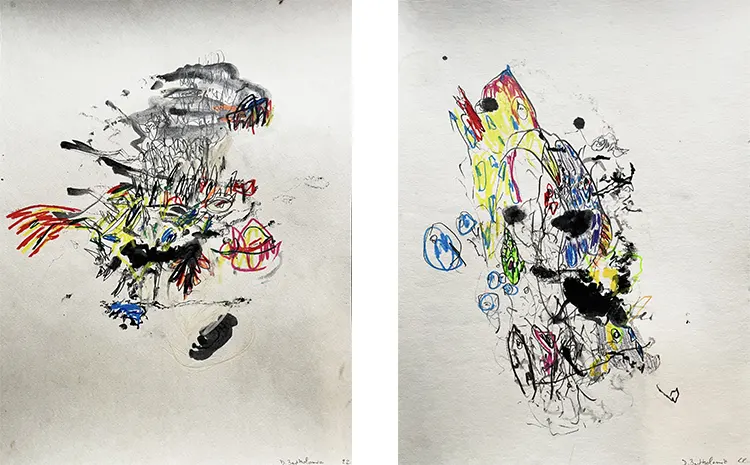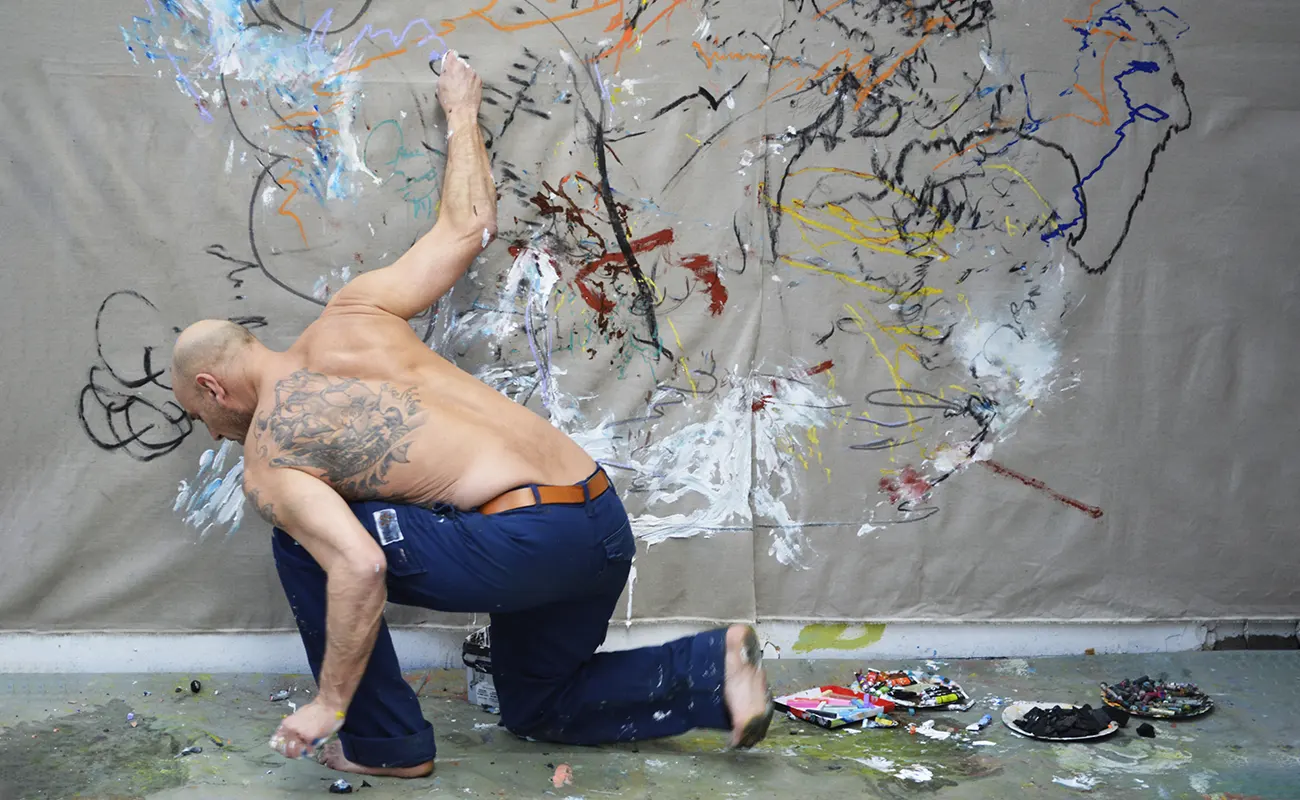“I am complex and seek in my practice an essential, an unconscious correctness.”
From the Tender Age of 13: David Bartholoméo’s Formative Years
From the tender age of 13, David Bartholoméo has been deeply immersed in the world of artistic expression, under the tutelage of his mentor, Pierre Pilonchéry, who shared a close connection with the esteemed John Cage. Pilonchéry introduced the young artist to the essence of authentic art, igniting a profound emotional reaction within him upon exposure to the oeuvre of Jackson Pollock and the Dadaists. Throughout this formative period, Bartholoméo penned extensive writings as an outlet for his intense melancholy and simmering anger.
The enigmatic artist derives inspiration from his introspection and relentless pursuit of letting go, as he is captivated by the multifaceted aspects of human nature. Bartholoméo’s work is influenced by the dichotomy between our innate animalistic instincts and our aspiration to manifest the pinnacle of humanity. This duality has long served as a rich wellspring of inspiration for the artist.
Bartholoméo’s realization that this creative impulse is an ever-present force within him, independent of external circumstances or events, has been a transformative revelation. His journey towards release and surrender is deeply rooted in a comprehensive comprehension of the complexities of human nature, as well as the perpetual struggle between our primal urges and our yearning for something greater.
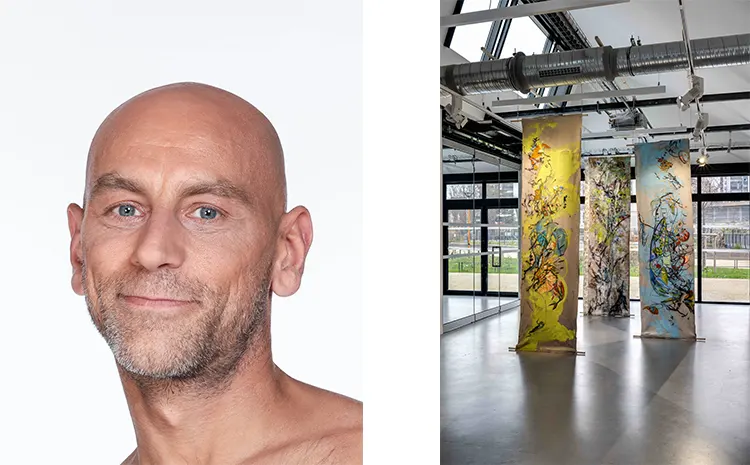
Embracing Eclectic Influences: David Bartholoméo’s Self-Taught Evolution
Over time, David Bartholoméo’s style has evolved in a self-taught fashion, drawing inspiration from various artistic movements of the 20th century, such as poster art with political commitment, lyrical abstraction, abstract expressionism, art brut, and more conceptual contemporary art. Bartholoméo embraces the amalgamation of these influences, describing himself as a multifaceted artist who is keenly aware of his eclectic nature.
Bartholoméo takes great satisfaction in each of his creations, believing that they genuinely reflect his emotions and experiences. He perceives no hierarchy among his works, treating each piece as an essential component of his artistic journey.
The foundation of Bartholoméo’s artistic practice is grounded in the use of materials, paper recycling, and movement. With the support of the Vieux Lyon gallery, he has been able to sustain himself through his art and continue its development. As an artistic explorer, Bartholoméo has pushed the boundaries of painting, his work perpetually in motion and intimately connected to his ever-evolving emotions. In grappling with the world and his inner turmoil, he found himself drawn to the concept of “bad painting” and the use of thick, unbridled materials.
Rather than striving for mere aesthetic appeal, Bartholoméo aims to provoke, question, and even confront the viewer. After nearly eight years of experimenting with various mediums and approaches, he continues to seek equilibrium between the raw and refined aspects of his work, endeavoring to establish a harmony that preserves both energy and tranquility.
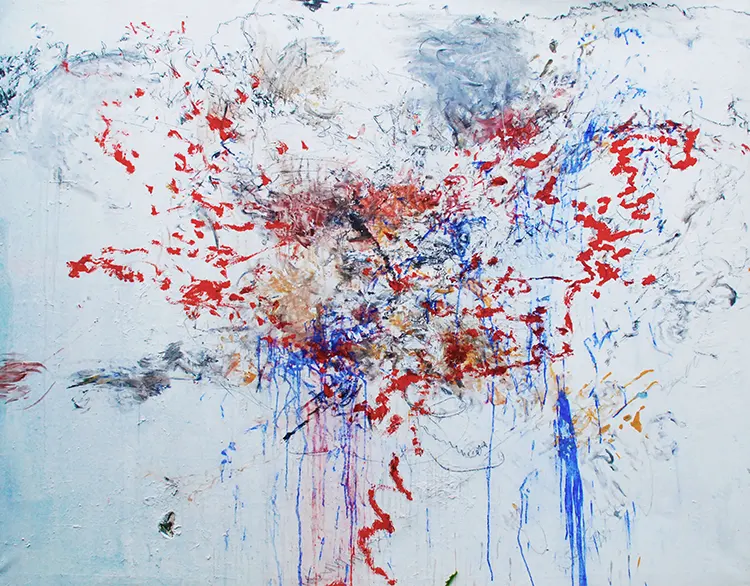
David Bartholoméo’s Innovative Performances
David Bartholoméo is an artist renowned for his multifaceted approach to the creative process. His oeuvre encompasses not only abstract works but also innovative performances, in which he transforms musical experiences into captivating visual expressions. Often painting with his eyes closed, Bartholoméo’s fluid movements leave traces on the canvas, reminiscent of the ever-changing shapes found in cloud formations.
Occasionally, the artist accentuates these forms, imbuing his abstract compositions with a formal quality, devoid of a specific narrative. This approach invites viewers to engage with the artwork through their unique interpretations, sparking their individual imaginations. Bartholoméo himself often discerns sets of animals materializing from the intricacies of his gestures.
In recent years, Bartholoméo has shifted his artistic focus towards performance and embracing the present moment. This evolution has led him to develop a form of unconscious writing, which he finds immensely satisfying. As he opens his eyes and surveys the outcome of his creative process, he no longer judges the end product. Instead, he perceives the artwork as a conduit, channeling inspiration from an ethereal plane, driven by the melodies and sounds that initially stirred him to paint, write, or take note.
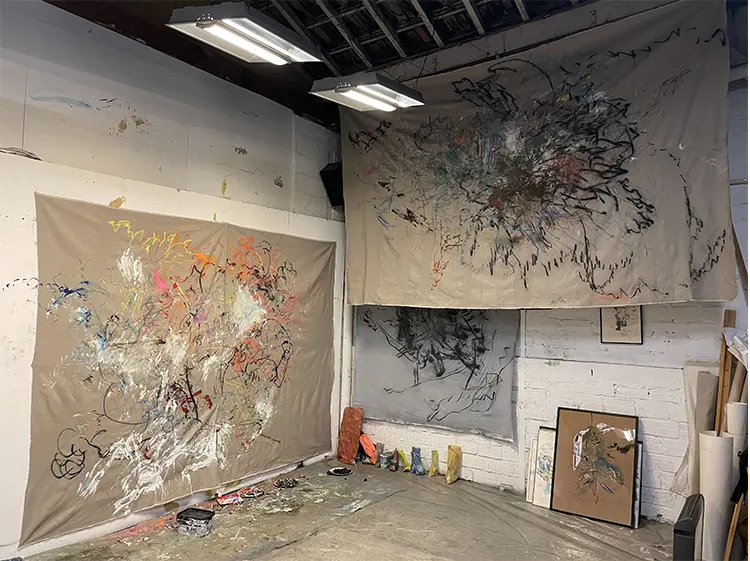
Balancing Raw Energy and Tranquility in Art: David Bartholoméo ‘s Ongoing Journey
David Bartholoméo cherishes a diverse and versatile working environment, thriving in both urban and rural settings. However, it is the collaboration with fellow musicians and sharing moments of creative synergy that truly ignites the artist’s passion.
Bartholoméo envisions a dream project, in which his performance renderings are translated into prints or embroidery on linen canvas, tailored to complement the interiors of homes or stores. By delving into the realms of interior design and architecture, he aims to expand the scope of his artistic research. Currently, he is actively seeking architects who share his vision and enthusiasm. Of course, exhibiting alongside the likes of Pollock and Joan Mitchell at the Guggenheim remains a cherished aspiration.
The artist acknowledges the dual nature of art in his life, as both a driving force and a source of marginalization. While it enables him to make sense of the world, empathize with children and those facing challenges, it also often leads him on a pursuit of something elusive. Bartholoméo has long viewed life as a performance; however, in his present journey, he yearns for a sense of tranquility, not necessarily in the creative process itself, but in the means to support himself and his craft.
